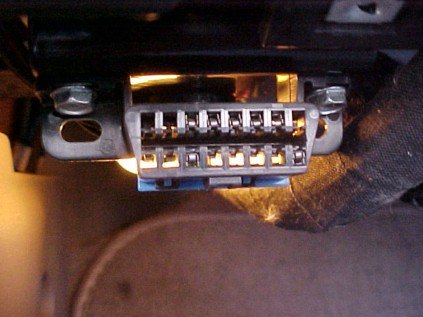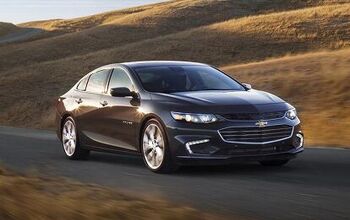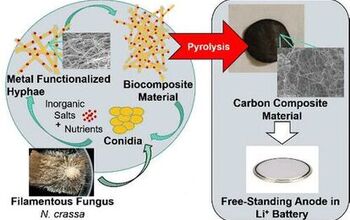Could Someone Hack Into Your Car?
Most car enthusiasts bemoan the rise of electronic systems in automobiles because they create a layer of interference between ourselves and the direct, mechanical control of our cars. Sure, electronic controls are cheaper, lighter and allow for easier diagnostics, but they rob automobiles of the elemental simplicity which is so often fundamental to their appeal. And, as a study by researchers from the Universities of Washington and San Diego [in PDF format here, via ArsTechnica] shows, the various electronic systems in your car actually makes it vulnerable to hackers who could disable key systems remotely. Titled Experimental Security Analysis of a Modern Automobile, the study explains that the electronic complexity of modern cars actually leaves them extremely vulnerable to all kinds of attack, raising serious concerns about how safe we really are in our cars (especially if we happen to have an enemy or two).
The study focused on accessing on-board computers via the federally mandated OBD-II on-board-diagnostics port, and the study shows that physical access to this port for even a brief period is sufficient to upload “malware” programs, which could compromise on-board systems. Physical access could also be granted by installing something as innocuous as an aftermarket stereo system embedded with malware. And though it’s easy enough for anyone to access these ports or install malware-infected components, there need not even be a physical link to the car to compromise its safety and privacy.
The other vector is via the numerous wireless interfaces implemented in the modern automobile. In our car we identified no fewer than five kinds of digital radio interfaces accepting outside input, some over only a short range and others over indefinite distance. While outside the scope of this paper, we wish to be clear that vulnerabilities in such services are not purely theoretical. We have developed the ability to remotely compromise key ECUs in our car via externally-facing vulnerabilities, amplify the impact of these remote compromises using the results in this paper, and ultimately monitor and control our car remotely over the
Through these vectors to the OBD-II port, researchers were able to access the Controller Area Network bus, a protocol standard to all new vehicles sold in the US after 2008. The researchers developed “CAR SHARK,” a “custom CAN bus analyzer and packet injection tool,” and were able to identify several serious security issues with the protocol.
Broadcast Nature. Since CAN packets are both physically and logically broadcast to all nodes, a malicious component on the network can easily snoop on all communications or send packets to any other node on the network. CAR SHARK leverages this property, allowing us to observe and reverse-engineer packets, as well as to inject new packets to induce various actions.
Fragility to DoS. The CAN protocol is extremely vulnerable to denial-of-service attacks. In addition to simple packet flooding attacks, CAN’s priority-based arbitration scheme allows a node to assert a “dominant” state on the bus indefinitely and cause all other CAN nodes to back off. While most controllers have logic to avoid accidentally pairs: breaking the network this way, adversarially-controlled hardware would not need to exercise such precautions.
No Authenticator Fields. CAN packets contain no authenticator fields — or even any source identifier fields — meaning that any component can indistinguishably send a packet to any other component. This means that any single compromised component can be used to control all of the other components on that bus, provided those components themselves do not implement defenses; we consider the security of individual components in Section V.
Weak Access Control. The protocol standards for our car specify a challenge-response sequence to protect ECUs against certain actions without authorization…Under the hood, ECUs are supposed to use a fixed challenge (seed) for each of these challenge-response pairs; the corresponding responses (keys) are also fixed and stored in these ECUs. The motivation for using fixed seeds and keys is to avoid storing the challenge-response algorithm in the ECU firmware itself (since that firmware could be read out if an external flash chip is used). Indeed, the associated reference standard states “under no circumstances shall the encryption algorithm ever reside in the node.” (The tester, however, does have the algorithm and uses it to compute the key.) Different ECUs should have different seeds and keys… Furthermore, as described in the protocol standards, the challenges (seeds) and responses (keys) are both just 16 bits. Because the ECUs are required to allow a key attempt every 10 seconds, an attacker could crack one ECU key in a little over seven and a half days.CAN. Given the weaknesses with the CAN access control sequence, the role of “tester” is effectively open to any node on the bus and thus to any attacker.
Moreover, numerous failsafes were easily evaded. Researchers were able to remove all CAN communications from the ECU while the vehicle was moving, and even reflashed the ECU while the vehicle was moving. Moreover, experimenters were able to remove a vehicle’s entire telematics memory, including their keys without authentication, and even cause a car’s Device Control system to disable key components like brakes. And if it seems like any of these attacks would require a deep and intimate knowledge of the inner workings of our cars’ electronic brains, think again.
Much to our surprise, significant attacks do not require a complete understanding or reverse-engineering of even a single component of the car. In fact, because the range of valid CAN packets is rather small, significant damage can be done by simple fuzzing of packets (i.e., iterative testing of random or partially random packets). In- deed, for attackers seeking indiscriminate disruption, fuzzing is an effective attack by itself. (Unlike traditional uses of fuzzing, we use fuzzing to aid in the reverse engineering of functionality.)
By now, your eyes have either glazed over with boredom, or you’re just starting to get interested. For those in the latter category, we suggest checking out the full 16-page report [in PDF format here], and taking a shot at explaining some of this information in a less technical manner.
More by Edward Niedermeyer
Latest Car Reviews
Read moreLatest Product Reviews
Read moreRecent Comments
- Dartman https://apnews.com/article/artificial-intelligence-fighter-jets-air-force-6a1100c96a73ca9b7f41cbd6a2753fdaAutonymous/Ai is here now. The question is implementation and acceptance.
- FreedMike If Dodge were smart - and I don't think they are - they'd spend their money refreshing and reworking the Durango (which I think is entering model year 3,221), versus going down the same "stuff 'em full of motor and give 'em cool new paint options" path. That's the approach they used with the Charger and Challenger, and both those models are dead. The Durango is still a strong product in a strong market; why not keep it fresher?
- Bill Wade I was driving a new Subaru a few weeks ago on I-10 near Tucson and it suddenly decided to slam on the brakes from a tumbleweed blowing across the highway. I just about had a heart attack while it nearly threw my mom through the windshield and dumped our grocery bags all over the place. It seems like a bad idea to me, the tech isn't ready.
- FreedMike I don't get the business case for these plug-in hybrid Jeep off roaders. They're a LOT more expensive (almost fourteen grand for the four-door Wrangler) and still get lousy MPG. They're certainly quick, but the last thing the Wrangler - one of the most obtuse-handling vehicles you can buy - needs is MOOOAAAARRRR POWER. In my neck of the woods, where off-road vehicles are big, the only 4Xe models I see of the wrangler wear fleet (rental) plates. What's the point? Wrangler sales have taken a massive plunge the last few years - why doesn't Jeep focus on affordability and value versus tech that only a very small part of its' buyer base would appreciate?
- Bill Wade I think about my dealer who was clueless about uConnect updates and still can't fix station presets disappearing and the manufacturers want me to trust them and their dealers to address any self driving concerns when they can't fix a simple radio?Right.


































Comments
Join the conversation
I guess this gives Toyota and excuse for their SUA. It was just these guys fooling around with some malware.
The CAN protocol was first designed for industrial machinery controls and it has gradually migrated over to vehicles of all types. It is heavily used in the off-highway and agricultural equipment sectors as well. It was never intended to be hacker-proof! The SAE publishes specifications for the CAN protocols used in vehicles should you care to read more. On a somewhat related note, searching the web a few years' back I came across a lawsuit against the federal gov't involving the FBI's use of Onstar to eavesdrop on potential suspects without their knowledge (IIRC it was a "warrantless wiretap"). The hands-free cell phone built into the car makes the perfect bug. It goes without saying that you need not be an Onstar subscriber for them to do this. If you don't use Onstar, you may consider introducing the antenna wiring to your diagonal cutters, if you are paranoid about such things (Big Brother may already be listening . . . SUPV: "Bill, anything from the car lately?" EMPL: "Well, they're listening to Glen Beck" SUPV: "Bring 'em in STAT for questioning!")